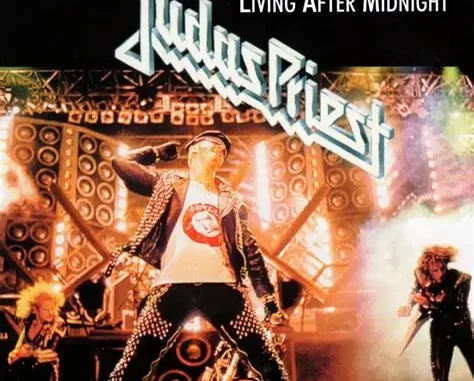
Certainly! Here’s a comprehensive overview of Judas Priest and their iconic songs “Living After Midnight,” “Bent for Leather,” “Green Manalishi,” “Painkiller,” “Electric Eye,” and “Hell,” all woven into a 900-word narrative:
—
**Judas Priest: Pioneers of Heavy Metal and Their Legendary Tracks**
Judas Priest, formed in Birmingham, England, in 1969, is widely regarded as one of the most influential bands in the development of heavy metal. Their innovative sound, characterized by twin guitar riffs, soaring vocals, and anthemic melodies, helped shape the genre and inspire countless bands that followed. Over the decades, Judas Priest has released numerous classic albums, with many songs becoming staples of the metal community. Among their most iconic tracks are “Living After Midnight,” “Bent for Leather,” “Green Manalishi,” “Painkiller,” “Electric Eye,” and “Hell,” each showcasing different facets of their musical evolution.
**”Living After Midnight” – The Party Anthem**
Released in 1980 as part of their album *British Steel*, “Living After Midnight” epitomizes Judas Priest’s ability to craft high-energy, sing-along anthems. Written by Glenn Tipton and Rob Halford, the song captures the rebellious spirit of youth and the thrill of nightlife. With its infectious riffs, catchy chorus, and energetic rhythm, it became an instant party anthem that remains popular at concerts and parties. The lyrics describe a carefree attitude, embracing the night and living without regrets, symbolizing the band’s knack for combining metal’s power with accessible, rock ‘n’ roll sensibilities.
**”Bent for Leather” – The Metal Lifestyle**
Though less commercially prominent than “Living After Midnight,” “Bent for Leather” appeared on Judas Priest’s 1978 album *Killing Machine* (released as *Hell Bent for Leather* in North America). This song exemplifies the band’s embrace of leather-clad imagery and the rebellious biker aesthetic that became synonymous with their identity. The track is a gritty, energetic piece celebrating the metal lifestyle—leather, motorcycles, and rebellion. Its raw sound and attitude reflect the band’s attitude toward living freely and defying convention, cementing their status as metal icons who embody the rebellious spirit.
**”Green Manalishi (With the Two Prong Crown)” – The Dark Side of Wealth and Power**
Originally written and performed by Fleetwood Mac in 1970, Judas Priest’s cover of “The Green Manalishi” appeared on their 1979 album *Hell Bent for Leather*. The song’s lyrics delve into themes of greed, materialism, and the corrupting influence of wealth—symbolized by the “Green Manalishi.” Judas Priest infused their version with a heavier, darker sound, emphasizing the song’s ominous tone. Rob Halford’s powerful vocals and the ominous guitar riffing create a sense of foreboding. The song reflects the band’s willingness to reinterpret and reimagine songs, imbuing them with their signature metal intensity and themes of societal critique.
**”Painkiller” – The Speed and Power Metal Anthem**
Released in 1990 on the album *Painkiller*, this track is often regarded as one of Judas Priest’s heaviest and most aggressive songs. Written by Rob Halford, K.K. Downing, and Glenn Tipton, “Painkiller” features blistering riffs, double bass drumming, and Halford’s commanding vocal delivery. The song narrates the arrival of a messianic figure—”Painkiller”—who comes to purge evil and bring justice. Its rapid tempo and intense sound marked a new era for Judas Priest, pushing the boundaries of speed and power metal. “Painkiller” has become a defining song for the band, showcasing their ability to combine melodic complexity with raw aggression, inspiring countless metal bands and fans alike.
**”Electric Eye” – The Vigilant Sentinel**
From their 1982 album *Screaming for Vengeance*, “Electric Eye” combines science fiction themes with commentary on surveillance and privacy. The song features a pulsating riff, energetic tempo, and Halford’s soaring vocals. Lyrically, it describes an all-seeing “electric eye” that watches over everything, raising questions about technology’s intrusion into personal freedoms. Musically, it captures the essence of early ’80s metal with its driving rhythm and memorable hooks. The track’s futuristic theme and powerful delivery make it a standout, embodying Judas Priest’s knack for blending societal themes with metal’s aggressive sound.
**”Hell” – The Dark and The Supernatural**
The song “Hell” appears on various live albums and compilations, often serving as a thematic exploration of darkness, temptation, and the afterlife. Judas Priest has long incorporated themes of good versus evil, spiritual struggle, and the supernatural into their lyrics. Their music often delves into the duality of human nature, with “Hell” representing the darker side of existence. Musically, it features heavy riffs, ominous melodies, and Halford’s commanding vocals, creating an atmosphere of foreboding. The band’s fascination with mythological and spiritual themes adds depth to their metal narrative, making “Hell” a quintessential example of their lyrical and musical dark side.
—
**Legacy and Influence**
Judas Priest’s diverse catalog, from party anthems to dark societal critiques, demonstrates their versatility and pioneering spirit. Songs like “Living After Midnight” have become cultural staples, epitomizing the rebellious, energetic side of metal. Meanwhile, tracks like “Painkiller” pushed the genre’s technical boundaries, inspiring a new wave of speed and power metal bands. Their ability to blend thematic depth with musical intensity set a standard for heavy metal bands worldwide.
Over the years, Judas Priest has received numerous accolades, including induction into the Rock and Roll Hall of Fame in 2022. Their influence is evident in the countless bands that cite them as inspiration. Their iconic imagery—leather, studs, and the legendary “Metal God” Rob Halford—became symbols of metal culture.
**Conclusion**
Judas Priest’s contribution to heavy metal is immeasurable. Tracks like “Living After Midnight,” “Bent for Leather,” “Green Manalishi,” “Painkiller,” “Electric Eye,” and “Hell” exemplify their ability to craft memorable, thematically rich, and musically powerful songs. These tracks showcase their evolution from straightforward metal to complex, thematic compositions that continue to influence generations. As pioneers of the genre, Judas Priest’s legacy endures, and their music remains a testament to the rebellious spirit and artistic innovation that define heavy metal.
—
If you’d like a shorter summary or focus on specific songs, let me know!
Leave a Reply